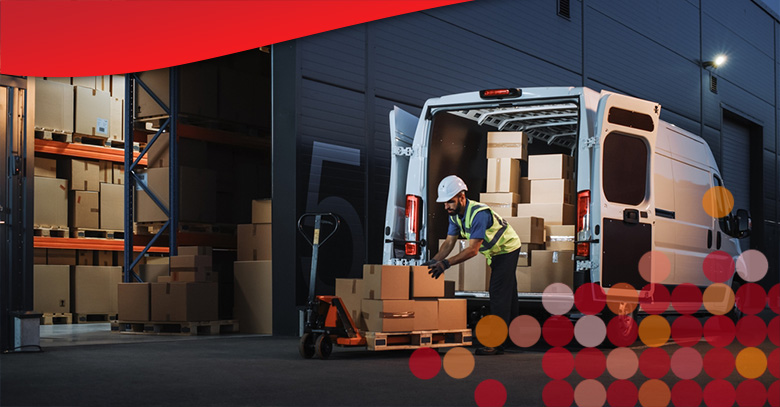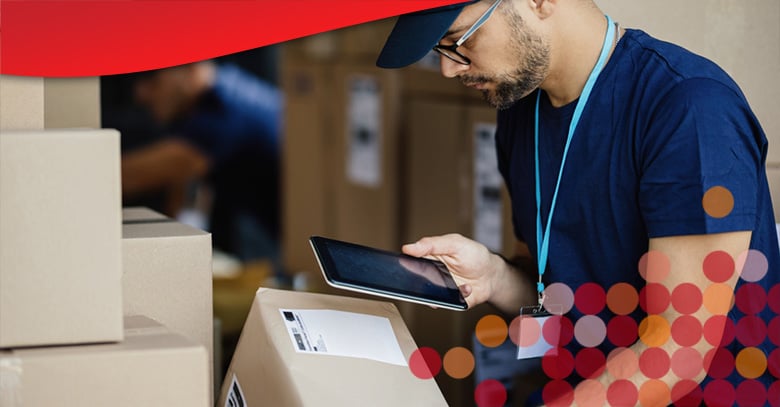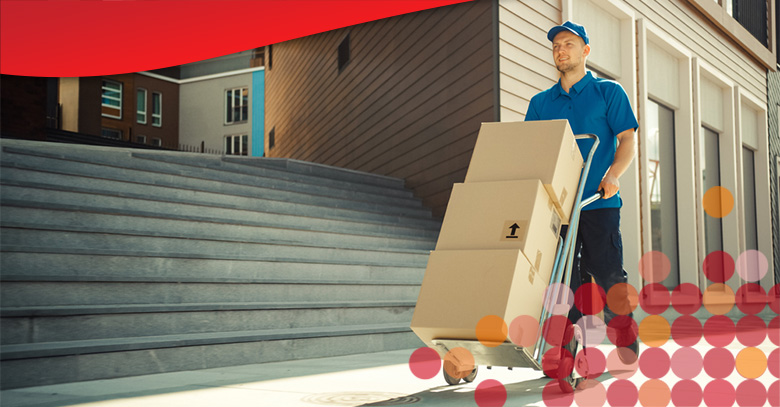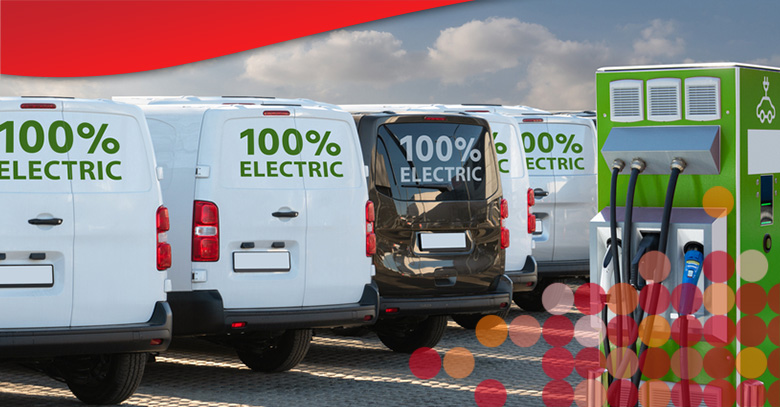Businesses must keep up with major players like Amazon, Uber, and Walmart, which rely on cutting-edge technology to make last-mile delivery faster, more traceable, and efficient. With customer expectations increasing, more businesses implement technology to expedite shipping requests, and several notable trends in the last-mile delivery market are emerging.
Last-Mile Delivery Explained
Last-mile delivery is a term that typically refers to the final leg of a package's journey to a residential address. It can also include businesses and other destinations. Last-mile delivery is commonly considered the most challenging and costly part of the delivery process because it involves navigating complex residential areas to deliver packages to individual homes and buildings.
An ever-evolving field, last-mile delivery is influenced by various trends and statistics, including technological advancements, consumer demands, and logistics challenges. In the current market, many businesses are discovering advanced technologies that improve their mobile operations’ efficiency, irrespective of the size of their fleet or number of drivers, reducing costs and improving customer service.
Current and Future Trends in Last-Mile Delivery Innovation
The e-commerce industry is largely driving the growth of the last-mile delivery industry. With the increasing popularity of online shopping, the demand for last-mile delivery services is expected to grow. According to recent statistics, the global Last-Mile Delivery for the E-commerce market was worth USD $38.5 million in 2021 and is expected to grow at a CAGR of 12.1% over the forecast period, reaching USD $76.5 million by 2027.
Consumers today have higher expectations and want same-day or next-day delivery options and complete transparency throughout the shipping process. Meeting these demands and providing a positive customer experience is critical for cultivating brand loyalty and remaining competitive in the current and future marketplace.
Last-mile delivery innovation and technology are making it possible to meet market demands and more. Businesses increasingly leverage smart technology, drones, delivery robots, and electric vehicles to help streamline operations, reduce costs, and improve delivery times. While trends vary depending on location, industry, and the specific needs of each delivery, we will look at these innovative technologies in greater detail below.
Smart Tech and Real-Time Tracking
Customers want more certainty, convenience, and visibility in their delivery options. Therefore, companies must find new ways to meet the expectations of consumers and businesses, who want precise delivery times and the assurance that their purchases will arrive on time. Real-time tracking using smart technology plays a major role in supporting a faster and more transparent last-mile delivery process to connect the planned delivery time to the current whereabouts.
With the use of IoT-enabled sensors and GPS-enabled devices, every shipment movement can be tracked. Further, artificial intelligence and machine learning technology, like Tourmo AI, is being deployed to analyze data to predict demand and anticipate potential problems while automating many operational processes required to streamline the entire delivery process.
Companies that do not use smart tech should evaluate their current technology solutions and consider incorporating this technology to optimize their last-mile delivery operations by making them highly transparent and reliable.
Hybrid Fleet Management Systems and Insourcing
Many businesses are incorporating the latest last-mile delivery trend, “hybrid fleet management.” It combines a trucking company's vehicles with outside contractors, third-party providers, and freelance drivers to adjust the fleet size to match fluctuations in demand and keep capital costs down.
Conversely, many companies manage the last-mile delivery internally, using their own fleet vehicles or a combination of company-owned and contracted vehicles, rather than outsourcing the delivery. Businesses that go for this option, a.k.a. insourcing, can gain better control over their delivery operations while avoiding some of the downsides of conventional outsourcing.
Despite this, outsourcing remains the preferred choice, with many companies collaborating with third parties to decrease last-mile delivery expenses. The hybrid fleet management trend has led some third-party logistics providers to create their own local delivery service to rival insourcing, complete with vehicles and personnel for local deliveries.
.jpg?width=1000&height=667&name=shutterstock_1908835825(1).jpg)
Drones, Robotic Deliveries, and Electric Vehicles
Businesses want to optimize mobile operations using the most sustainable, efficient, and cost-effective method for each delivery. For example, an enterprise can use a traditional delivery truck for larger and heavier products and utilize drones, autonomous robots, or electric or semi-electric vehicles. These options enable the delivery of smaller packages to hard-to-reach locations or provide same-day delivery in high-density urban areas.
Further, more companies prioritize sustainability globally. This trend drives increased demand for innovative technologies that enable deploying hybrid fleets. As more fleet managers adopt sustainable technology, such as electric vehicles, AI-powered platforms like Tourmo help them adjust to their specific features, leading to fewer accidents, cost reduction, and increased participation.
It is necessary to note that incorporating electric vehicles into a fleet introduces additional systems complexities, which can result in higher insurance costs. Over time, these added expenses may be offset by reduced costs for fuel and maintenance compared to traditional internal combustion vehicles. Because of this, an active safety program will be vital for covering insurance costs, minimizing accident repair costs, managing liability, and keeping delivery drivers safe.

Tourmo’s AI-Powered Workforce Operations Solution
To provide next-day, same-day, and short two-hour window deliveries, companies need a well-trained and experienced mobile fleet supported by cutting-edge technology. Business leaders must pay close attention to current and emerging trends and adopt more sophisticated and intelligent technologies, granting greater visibility and control over mobile operations.
Tourmo can help general managers and other company stakeholders reduce their dependency on manual processes and human data analysis. AI frees decision-makers to focus back on other time-sensitive, critical tasks. Our AI-powered technology accomplishes this, in part, by converting large amounts of data into automated actionable processes that assist decision-making and provide greater insights into crucial aspects of a company's operations.
Tourmo's AI-powered Workforce Operations solution will track and verify mobile workforce operations around the clock, providing all managers and stakeholders with complete visibility of their mobile fleets. Tourmo can automate your entire plan, monitor worker progress, and make changes as needed, all while continuously updating your mobile workforce and consumers to ensure compliance and satisfaction.
Our Workforce Operations solution will track whether work is completed as planned, notify clients when something changes, and take action via automated workflows of configured exceptions or issues. These features make it easy to identify and manage issues like delays at client sites, unplanned stops, route deviations, and out-of-sequence deliveries. Features include the following:
- Accurate event data, normalization, contextualization, and advanced route reasoning to remove inaccuracies
- Real-time monitoring of job progress and delivery estimates
- Real-time ETA
- Automated Progress Updates
- Activity/Inactivity Monitoring
- Systematically Generated, and Prioritized, Exceptions
Discover Innovative Last-Mile Delivery Technology With Tourmo AI
The process of last-mile delivery is becoming increasingly complex and challenging, with high costs associated with it. As the number of packages delivered increases, carriers face more difficulties managing traffic, navigating residential areas, and ensuring package safety.
If your company is just beginning its digital transformation journey or looking to improve its mobile process structure, including optimizing last-mile delivery operations, Tourmo can help. Tourmo AI-powered solutions can assist in maximizing the value of existing technology investments and improve the way you keep track, verify and manage delivery operations, resulting in significant improvements in efficiency and productivity.


 Neil Anderson, CMO
Neil Anderson, CMO



